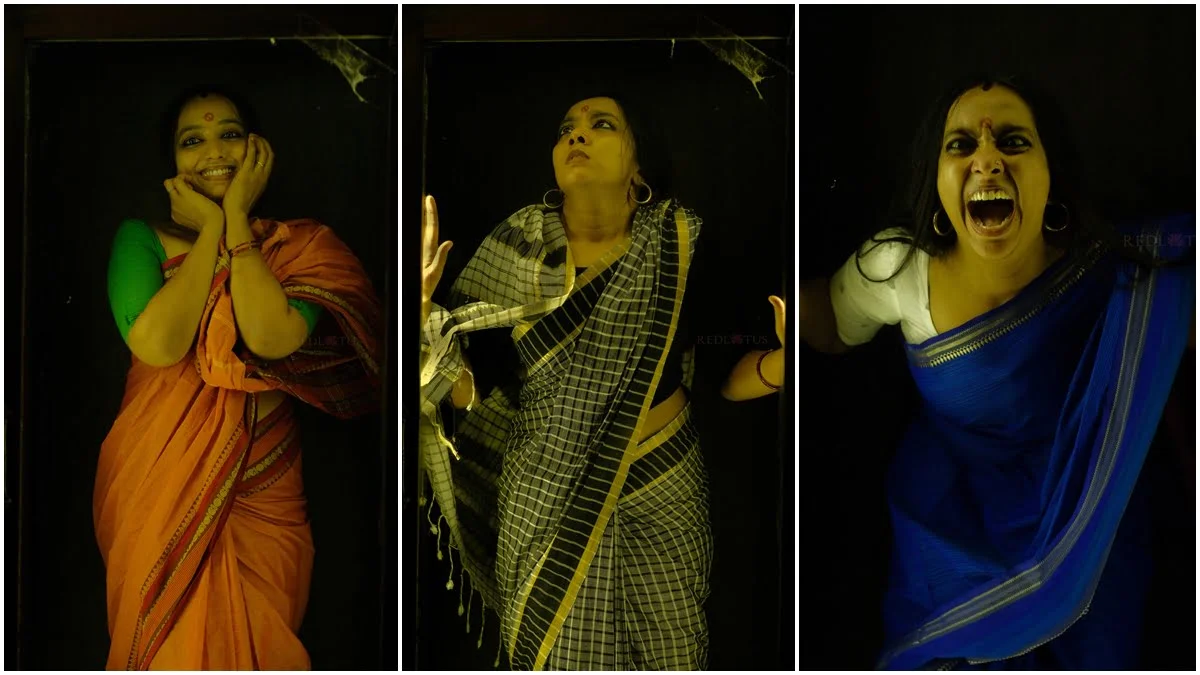Clothing, especially that of women, as a symbol of dissent or protest is a chapter that runs deep in the history of Kerala. From the Channar revolt to the recent Women Have Legs campaign, women’s bodies have been sites of revolution, battles of which they valiantly fought using their clothes as the medium. Adding to this rich trajectory is Sharmila Nair’s latest called The Almirah, a multidisciplinary fashion project, that uses handloom sarees and an almirah (a cupboard) as a commentary on women’s mental health, especially during the pandemic, and their limited access to the largely patriarchal public space.
Sharmila Nair’s latest called The Almirah, a multidisciplinary fashion project, uses handloom sarees and an almirah (a cupboard) as a commentary on women’s mental health, especially during the pandemic, and their limited access to the largely patriarchal public space.
Based in Kochi, Sharmila started her online boutique of handloom sarees – Red Lotus – about six to seven years ago. This year, as she was preparing to launch her latest project, the COVID-19 lockdown resulted in a setback. Sharmila’s sarees stayed put inside the almirah inside her office as she waited for the COVID-19 lockdown to end and things to go back to the normal that we all once knew. Meanwhile, Sharmila, having found a lot more time to spend with her family, found herself trying her hand at baking. She said she was happy.
Also read: In Conversation With Durga Gawde: An Artist, Activist And Drag King
However, as the wait for the ‘normal’ continued, Sharmila’s spirits were dampened not just by the long wait but also as she witnessed the rise in domestic violence cases around her. Specifically, Sharmila recollects how the Uthra murder case in Kerala, among others, disturbed her. This was when she found herself standing in front of the almirah handed down to her by her grandmother, where she kept her sarees, wondering: “What will I do with these now?”
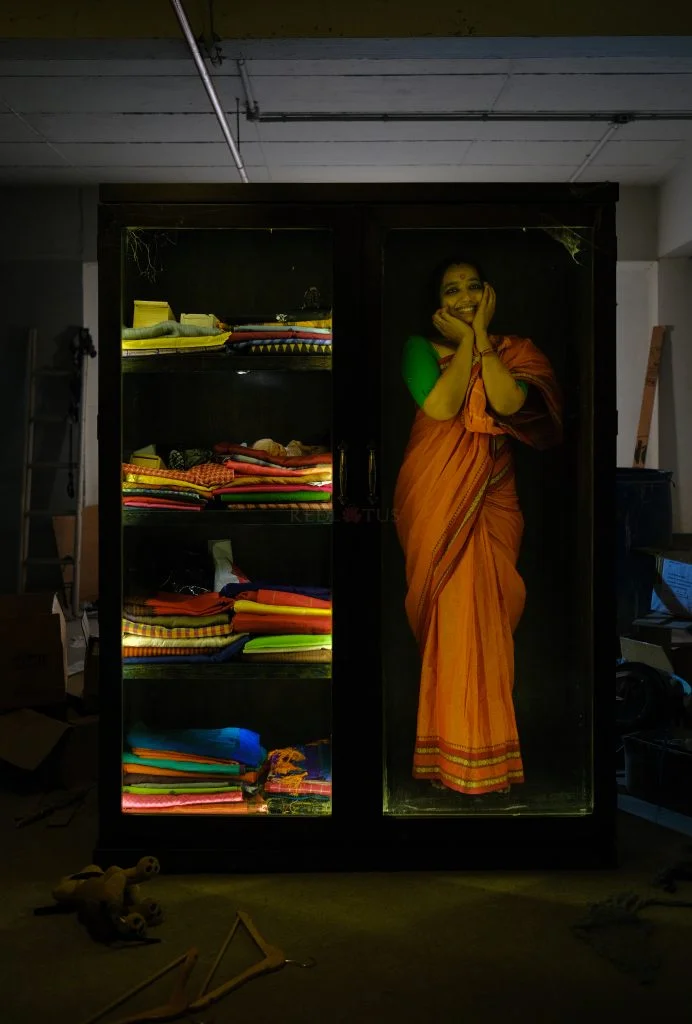
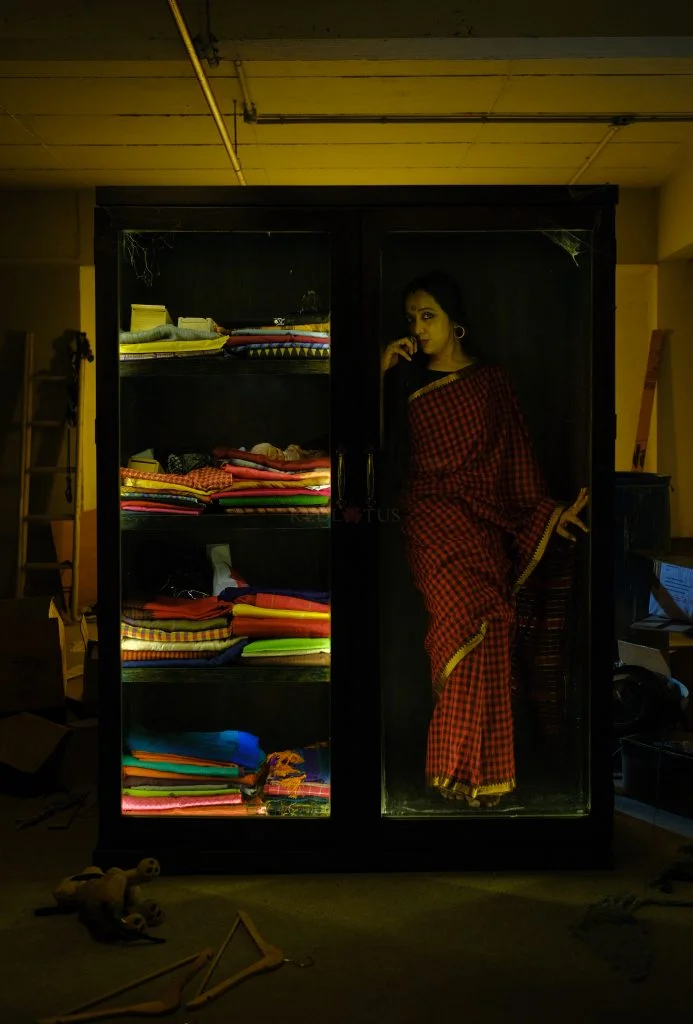
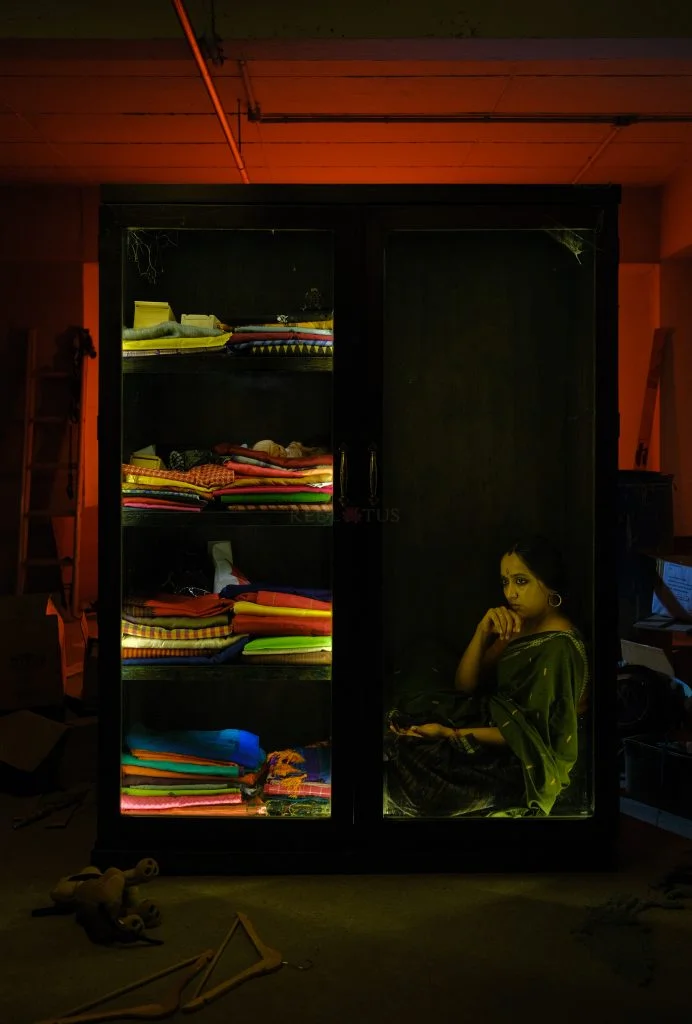
That’s when she found herself gravitating towards the idea of a fashion art installation of her sarees depicting eight states of women’s minds, in that order: ‘happiness, sensuousness, thoughtful, trapped, sadness, frustration, anger and powerful’. With The Almirah, Sharmila also attempted to make a commentary on the patriarchal tradition of a woman being gifted an almirah to keep all her belongings in, when she shifts into her husband’s home after marriage.
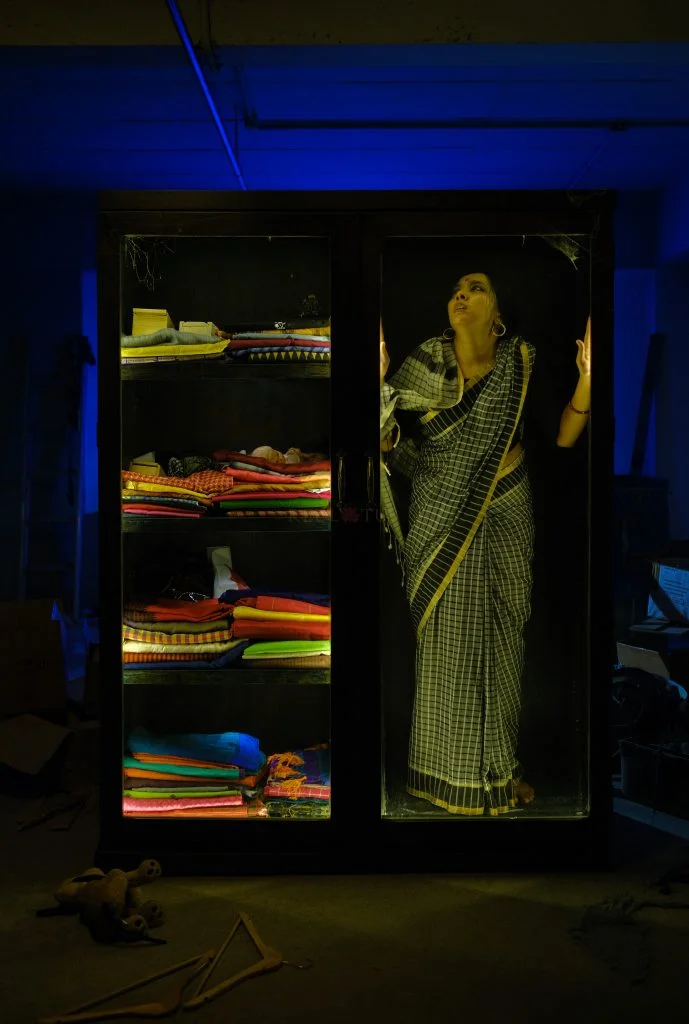

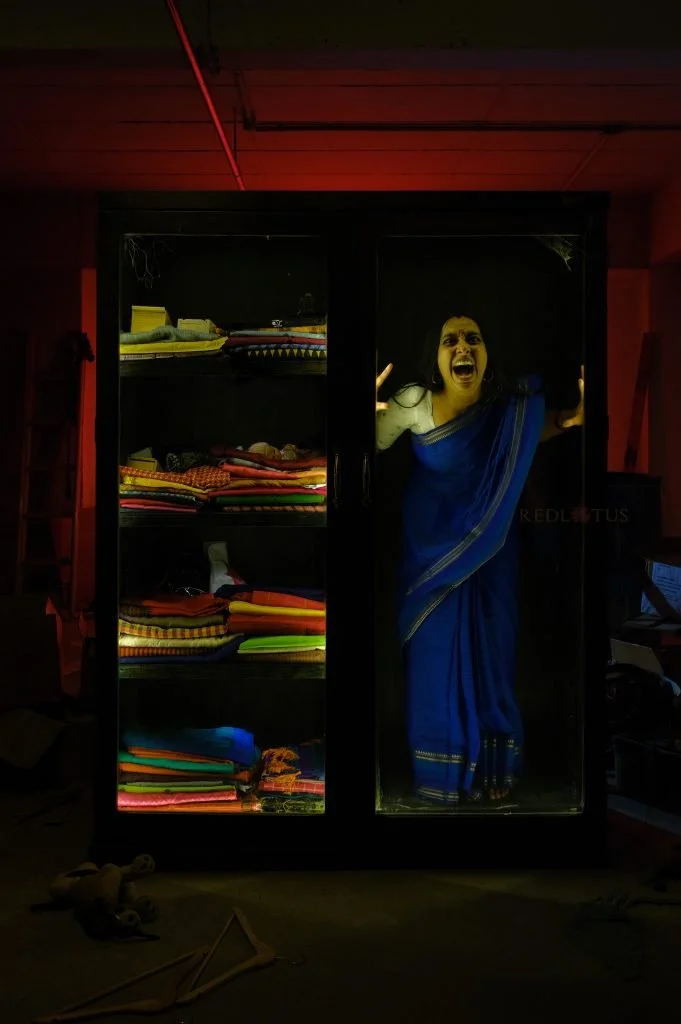
Coming from her personal narrative, Sharmila’s The Almirah depicts the various mental states in progression of women. To depict each state of mind, the model Ramya Suvi, an Indian classical dancer, wore a saree each from Sharmila’s collection as she stood inside the almirah, next to the neatly stacked others. To that narrative, Sharmila also weaves in the strand of the almirah as symbolising the limited public space that a woman has access to in her life, which only exacerbated in the pandemic lockdown. Sharmila recounts how her grandmother, who was deprived of her every day ritual of visiting the temple, was gravely affected as a result. In another instance, she tells us about the mother of her friend went completely silent as she found herself increasingly within the four walls of her home.
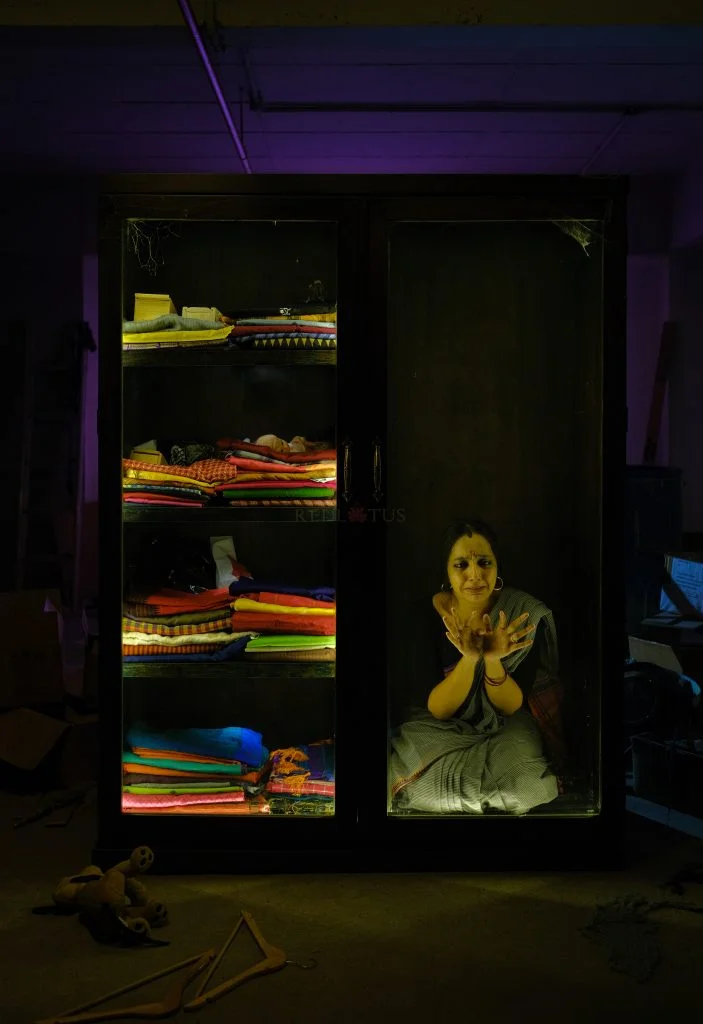
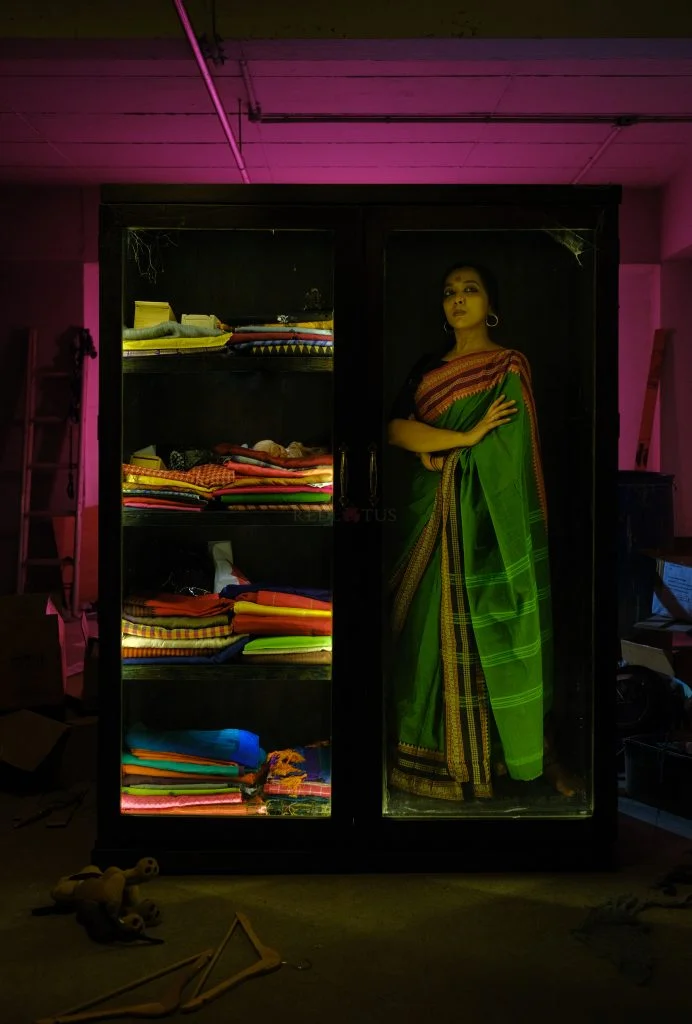
Sharmila, therefore, agrees that access to public spaces as well as the impact of COVID-19, are both gendered. The Almirah attempts to shed light on that. To further get the point across, the model adorns a bindi which is a prohibition sign of ‘No Entry’, symbolising women’s lack of access to spaces, and a black sindoor instead of red, which Sharmila says is a metaphor for how not all marriages are auspicious.
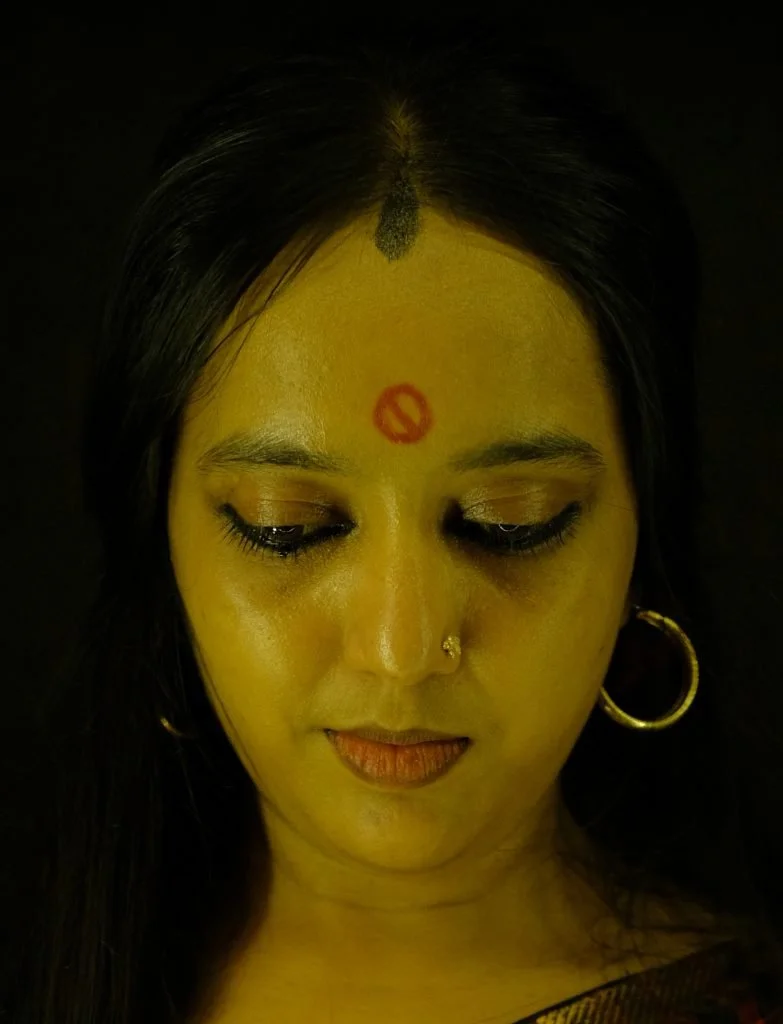
Sharmila, therefore, agrees that access to public spaces as well as the impact of COVID-19, are both gendered. The Almirah attempts to shed light on that. To further get the point across, the model adorns a bindi which is a prohibition sign of ‘No Entry’, symbolising women’s lack of access to spaces, and a black sindoor instead of red, which Sharmila says is a metaphor for how not all marriages are auspicious.
Stated to be the first multi-disciplinary fashion art installation of the state, Sharmila brought it all together using techniques such as fashion, photography, videography, structural design, poetry and solo performance. “It was not intended to become one. We began The Almirah as a photo project. The other elements kept getting added on and they seemed to fit perfectly,” she says.
The handloom sarees being the centre-piece of all her fashion projects, Sharmila firmly believes that the six yards is her medium to responds to socio-political situations, similar to how a writer puts pen to paper.
Also read: RLV Ramakrishnan’s Case Shows The Rampant Casteism in Classical Performing Arts

Sharmila has earlier worked on fashion projects such as the Mazhavillu (Rainbow) in 2016 which featured models from the trans community, the 18 Shades of Black in 2019 on the restrictions that women face which was conceptualised following the verdict that allowed women entry into the Sabarimala temple and Sakhya, a jewellery photography campaign on a woman’s journey from her childhood to adolescence. Not surprisingly, along with the widespread praise and acclaim, Sharmila also received criticism, especially for her project 18 Shades of Black, given the context, and many called her a ‘feminist’ as if it was a slur.
A student of literature at St Teresa’s College, Kochi before she turned to fashion art, following the positive response her project has been garnering, she now plans to take The Almirah to gallery spaces and art festivals such as the famed Biennale.
Images Credit: DocArt Productions/Sharmila Nair
About the author(s)
Soumya is a Masters graduate in gender from Jamia Millia Islamia & has a PG Diploma in New Media from Asian College Of Journalism. She is learning to unlearn and question patriarchal structures with empathy. She has taken an interest in gardening but has over-watered and killed two plants already. This may or may not be a metaphorical reference to how she deals with life.
